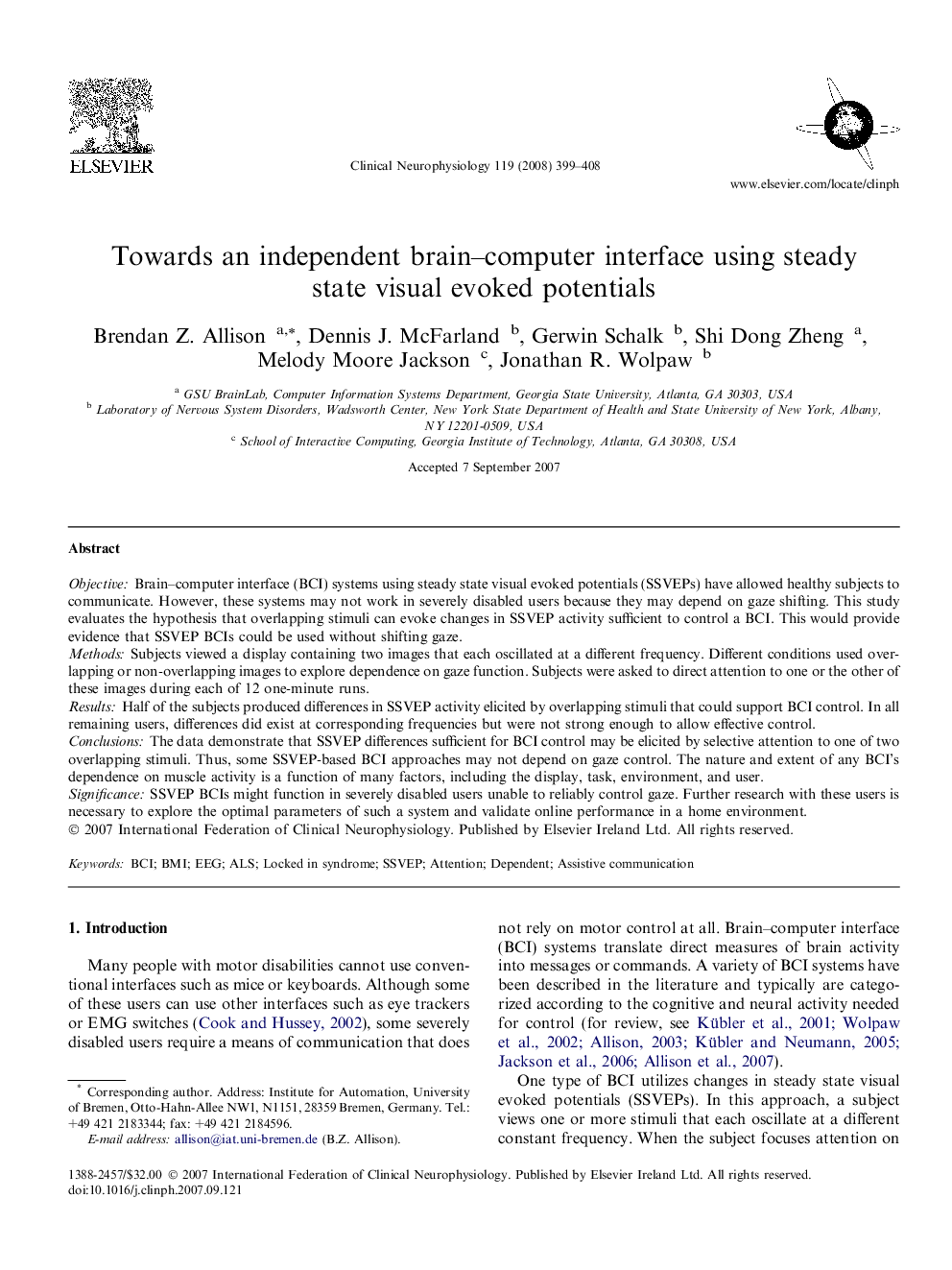| کد مقاله | کد نشریه | سال انتشار | مقاله انگلیسی | نسخه تمام متن |
|---|---|---|---|---|
| 3047880 | 1185068 | 2008 | 10 صفحه PDF | دانلود رایگان |

ObjectiveBrain–computer interface (BCI) systems using steady state visual evoked potentials (SSVEPs) have allowed healthy subjects to communicate. However, these systems may not work in severely disabled users because they may depend on gaze shifting. This study evaluates the hypothesis that overlapping stimuli can evoke changes in SSVEP activity sufficient to control a BCI. This would provide evidence that SSVEP BCIs could be used without shifting gaze.MethodsSubjects viewed a display containing two images that each oscillated at a different frequency. Different conditions used overlapping or non-overlapping images to explore dependence on gaze function. Subjects were asked to direct attention to one or the other of these images during each of 12 one-minute runs.ResultsHalf of the subjects produced differences in SSVEP activity elicited by overlapping stimuli that could support BCI control. In all remaining users, differences did exist at corresponding frequencies but were not strong enough to allow effective control.ConclusionsThe data demonstrate that SSVEP differences sufficient for BCI control may be elicited by selective attention to one of two overlapping stimuli. Thus, some SSVEP-based BCI approaches may not depend on gaze control. The nature and extent of any BCI’s dependence on muscle activity is a function of many factors, including the display, task, environment, and user.SignificanceSSVEP BCIs might function in severely disabled users unable to reliably control gaze. Further research with these users is necessary to explore the optimal parameters of such a system and validate online performance in a home environment.
Journal: Clinical Neurophysiology - Volume 119, Issue 2, February 2008, Pages 399–408